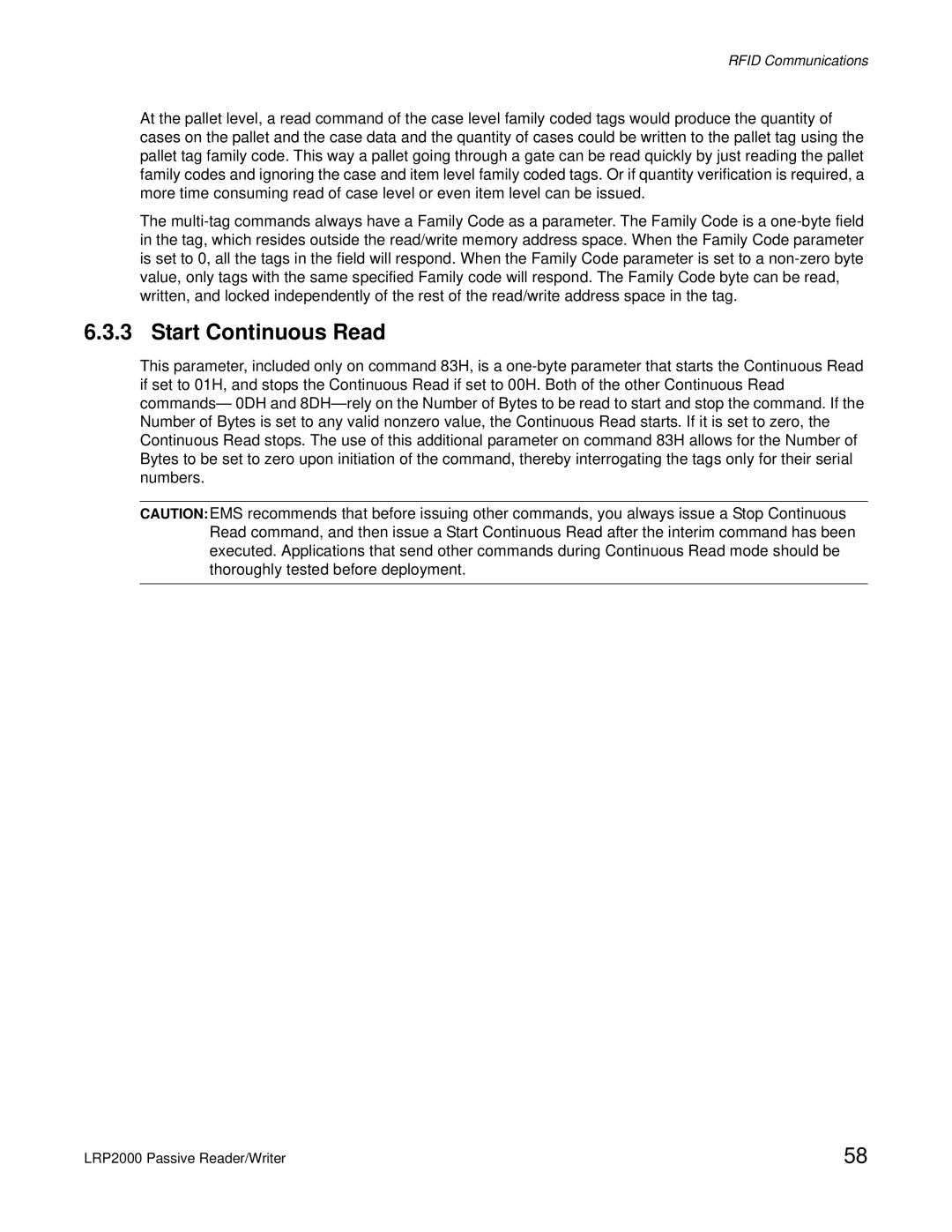
RFID Communications
At the pallet level, a read command of the case level family coded tags would produce the quantity of cases on the pallet and the case data and the quantity of cases could be written to the pallet tag using the pallet tag family code. This way a pallet going through a gate can be read quickly by just reading the pallet family codes and ignoring the case and item level family coded tags. Or if quantity verification is required, a more time consuming read of case level or even item level can be issued.
The
6.3.3 Start Continuous Read
This parameter, included only on command 83H, is a
CAUTION:EMS recommends that before issuing other commands, you always issue a Stop Continuous Read command, and then issue a Start Continuous Read after the interim command has been executed. Applications that send other commands during Continuous Read mode should be thoroughly tested before deployment.
LRP2000 Passive Reader/Writer | 58 |
